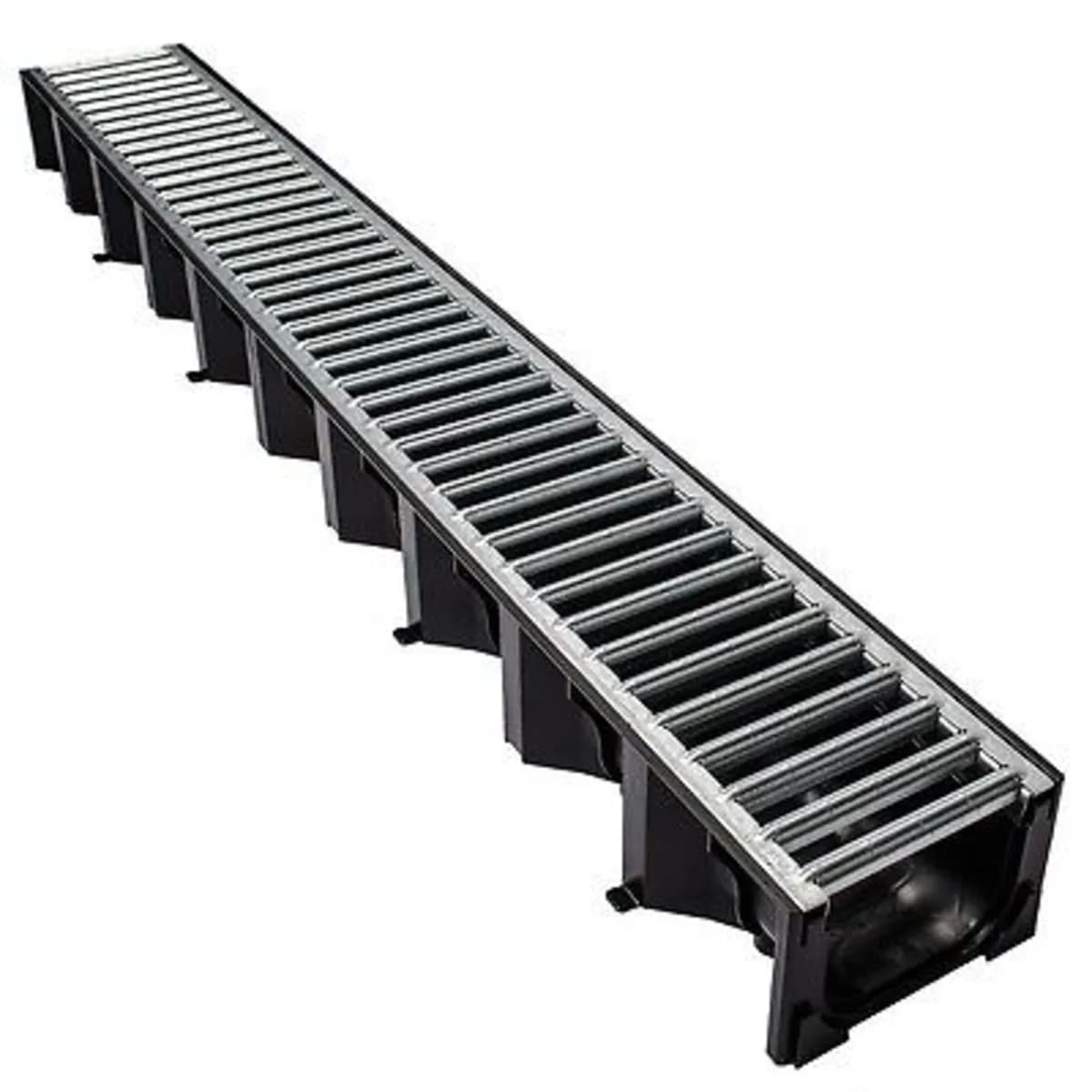Channel Drainage
(7 Products)Channel drainage is a surface-level drain system designed to handle runoff from paved or hard outdoor areas. It typically consists of a slim trench with a cover that allows water to pass through. Once collected, the water is carried off to prevent issues like pooling, slippery spots, or water creeping toward foundations.
What Is Channel Drainage?
Channel drainage works by collecting surface water and directing it away from paved or landscaped areas.
It's commonly used in settings where water runoff needs to be managed efficiently to avoid standing water or deterioration of surfaces.
The system includes a recessed trench that runs in line with the surface and is topped with a grate made to handle both foot and vehicle traffic.
When rainwater runs off a hard surface, it drops through the grate and flows along the channel to wherever you’ve planned for it to go - usually a soakaway, gulley, or a buried drainage pipe.
What’s In the System?
The Channel Itself
This is a slim trench or preformed unit that sits just below surface level. It’s usually made from plastic or a composite material like polymer concrete. Once installed, the top edge lines up neatly with the surrounding ground so it doesn’t stick out or create a trip hazard.
The Grate
Fixed over the top, the grate allows water in while stopping debris and large objects from clogging the channel. Grates come in different load ratings - some are built for foot traffic, others can handle cars or even light commercial vehicles.
The Slope
For drainage to work properly, the channel needs a slight fall, even if it’s just a few millimetres per metre. It’s designed to carry water along gently, stopping it from stagnating.
Inlets and Outlets
Channel drainage relies on properly placed inlets and outlets. Water enters through the top grating and exits through an outlet that connects to a soakaway or existing underground drain. For wider or sloped areas, multiple channels may be joined together to maintain flow and coverage.
Silt Traps and Filters
In areas where there’s a lot of debris, whether it’s soil, sand, or loose gravel, a silt trap can be fitted to catch that material before it gets into the drainage system. You can take them out easily for cleaning, which makes ongoing upkeep much simpler.
Different Types of Channel Drainage
Polymer Concrete Channels
Lightweight and easy to work with, these are often used in domestic settings. Despite their weight, they’re strong and hold up well in bad weather.
Galvanised Steel Options
Better suited for heavier-duty situations, like driveways or commercial entrances. They handle weight well and won’t corrode easily.
Decorative Styles
If you want something that blends into the paving or adds to the look of a garden, there are decorative grates that offer the same performance without the industrial appearance.
Add-Ons and Useful Extras
You’ll often need accessories to complete a system:
- End caps to seal off the drain
- Outlet connectors to link the channel to pipework
- Fixing clips or brackets to secure it in place
- Debris baskets for easier maintenance
Frequently Asked Channel Drainage Questions
What Do I Need to Install It?
What’s required can depend on the layout and surface, but generally, you’ll want to have these bits ready before starting:
- A set of channel drain lengths suited to the space you're working with
- End caps and grates or covers, depending on the style of system you’ve chosen
- Concrete or mortar to fix the drains firmly in place
- Something to dig with, usually a spade or trenching tool works well
- A spirit level and tape measure to make sure everything runs straight and at the correct fall
- A saw or cutting tool if you need to adjust the length of any sections
- And don’t forget your protective gear - gloves, decent boots, and eye protection are always worth putting on before you start
Can I Install It Myself?
If you’re dealing with a short, straightforward run and you’re confident with a bit of outdoor work, installing a channel drain is something you can probably manage on your own.
The key is making sure there’s a slight, consistent fall so the water flows properly, and that the drain is fixed in securely.
When things get more complex (like tying into buried pipework or working on uneven terrain), it’s a good idea to get someone in who’s done it before.
What’s a Slot Drain?
A slot drain works much like a regular trench drain, but instead of a full-width grate on top, it has a narrow, discreet opening that runs along its length.
It's a popular choice in more modern or high-end outdoor spaces where a clean, minimal look is important. The slim design still handles water effectively but blends into the surface, so it’s barely noticeable once installed.









